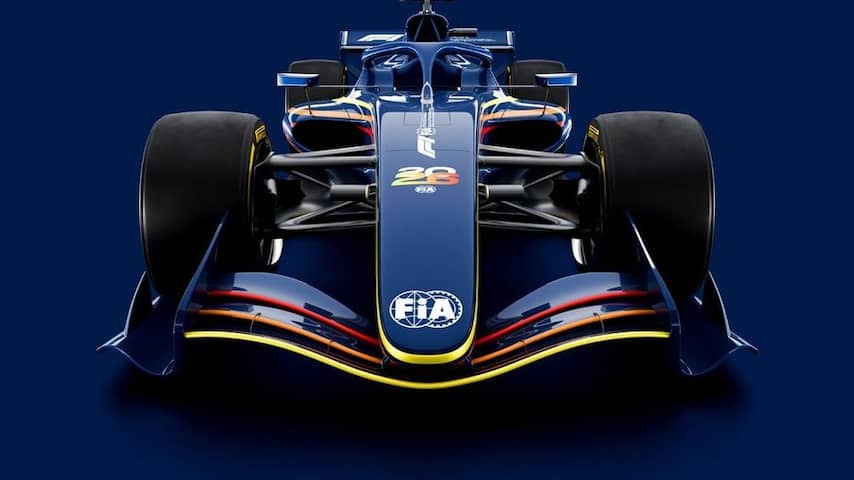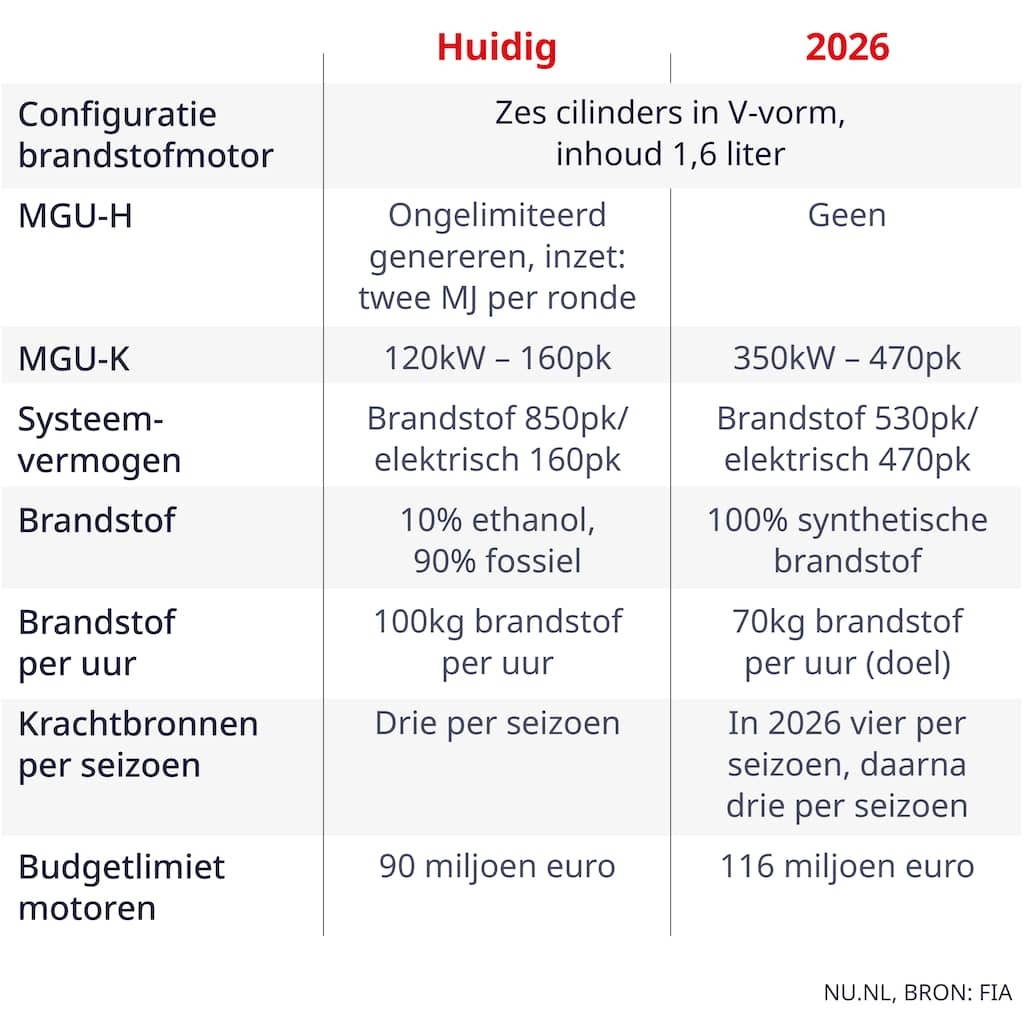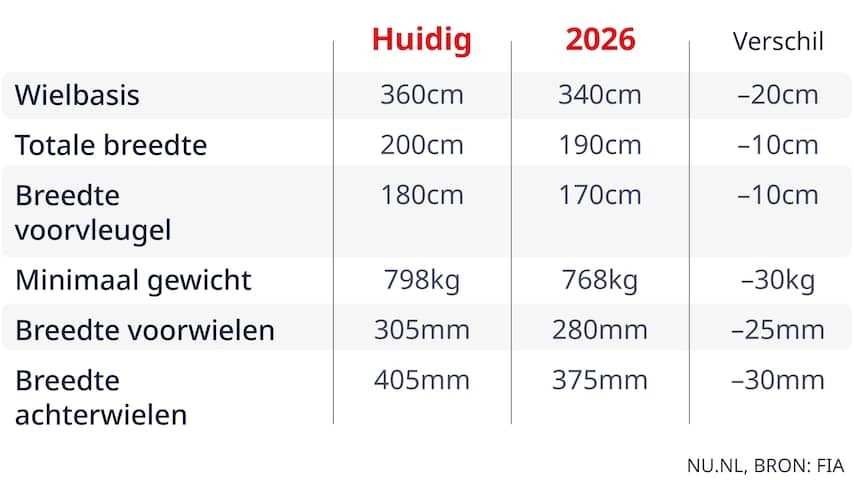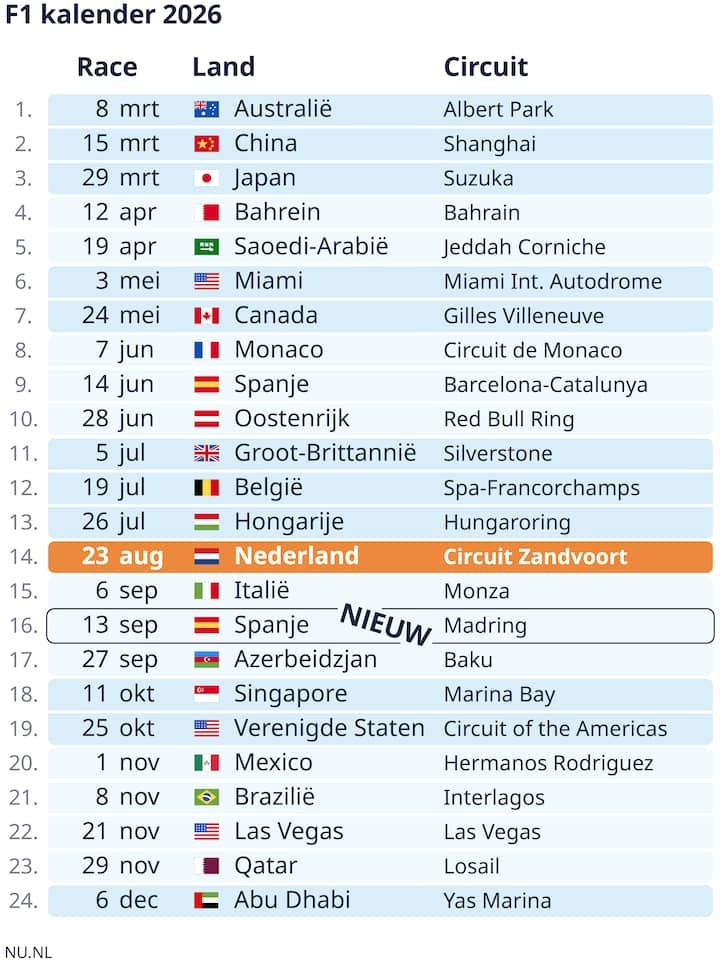
Although the current Formula 1 season is only halfway through, ‘2026’ is emphatically looming over the market. Over the transfer market, for example, but the technical regulations will also be completely overhauled. New engines, new cars, a new team: NU.nl lists all the changes.
The biggest change on the grid is of course the arrival of an eleventh team: Cadillac. After a long political game, the Americans have conquered a coveted spot in the premier class. From 2029 there must even be an engine produced by parent company General Motors, but in 2026 there will be a Ferrari power source in the back.
Audi is also making its entrance after a long run-up. As is known, the Sauber team will continue as the German factory team next year, including its own engine. Further changes: Red Bull is making its own power source in collaboration with Ford, engine supplier Honda is moving to Aston Martin and Alpine is getting Mercedes engines. Below is the complete overview:

Although the rumor mill is currently mainly revolving around Max Verstappen, he is one of the drivers who – on paper – is simply fixed for 2026. Formally, eight places are vacant. The questions surrounding Verstappen are related to the future of Mercedes drivers George Russell and Andrea Kimi Antonelli, who are still without a contract for 2026.
Sergio Pérez and Valtteri Bottas are mentioned at Cadillac. Yuki Tsunoda’s name is also mentioned, although the Japanese driver has strong ties with Honda and thus potentially also with Aston Martin. His future at Red Bull is very uncertain.
Isack Hadjar is certainly the first candidate to be promoted from Racing Bulls to Red Bull. F2 talent Arvid Lindblad may just step in at Red Bull’s training team. And then there is the unanswered question of whether Verstappen himself will stay.
The most important change: the cars themselves
The Formula 1 rules are facing the biggest change since 2022, with a new technical package that will change even more radically than four seasons ago. Back then, only the cars were significantly adjusted. Now the cars and the engines are changing.
First the power source – and here it gets a bit technical. It remains a hybrid, so a combination of a V6 fuel engine with turbo, coupled to an electric regeneration and drive system. This is the MGU-K (Motor Generator Unit-Kinetic). This device can store energy when braking and then works as a generator. At the same time, it is also an electric motor, which uses the energy stored in a battery to provide the main engine with extra power. This MGU-K is already there, but will be much stronger in 2026.
The share of electric drive in the total power will thus be roughly half, where it is still around 20 percent with the current MGU-K. The expectation is that roughly 530 hp will come from the fuel engine, and 470 hp from this electric motor. The current cars also have an MGU-H (Motor Generator Unit-Heat), which is linked to the turbo. This will disappear by 2026.
The fuel engine will therefore be less powerful. This has a few causes. For example, the turbo is less effective due to the scrapping of the MGU-H. In addition, only 70 kilograms of fuel per hour may run to the engine, where it is currently 100 kilograms per hour.
That fuel itself is also new: Formula 1 is switching to fully sustainable synthetic fuel. After 75 years, fossil fuel is over. Below is an overview of all the changes:

Smaller, lighter cars and other solutions
After years of growth, the Formula 1 cars are finally getting smaller and lighter. The latter is still a challenge, because the engines are becoming even heavier. Just like at the beginning of 2022, it is therefore unlikely that everyone will immediately reach the new minimum weight of 768 kilos. That will certainly be a major factor in the competitive relationships in 2026.
Another, current factor is disappearing. Since 2022, teams have been struggling with the extremely sensitive ride height of the cars, which with their complex floors must be adjusted as low as possible without the car bouncing too much or the floor wearing away too much.
For 2026, the tunnels in the floor in which downforce is now created thanks to the ground effect will disappear and the cars will be largely flat again from below, as before 2022. As a result, they no longer have to be so extremely stiff and rigid.

Drivers are not yet entirely enthusiastic about new cars
The latter sounds like good news for the drivers, but we also hear them grumbling. Ferrari driver Charles Leclerc recently stated that – after his first ride in the simulator – he fears that the new cars will not be pleasant to drive. And he wasn’t the only one.
Racing will be very different. It works like this: due to the move to half fuel engine/half electric drive, saving energy becomes much more important. To help the drivers with this, the wings are even active, front and rear. On the straights, the wings lie flat à la the current DRS, for less air resistance and therefore less energy consumption. In the corners they fold up again. These two positions are given the fashionable terms X-mode and Z-mode. There is even a fear that the cars will initially have too little energy to go full throttle for a lap.
The current DRS will disappear completely. This overtaking aid will be replaced with a position in the electric motor that briefly gives extra power. A sport that is already very complex becomes even more complex. Due to the adjustment to the floor, the downforce also decreases significantly (by 30 percent), which means that the cornering speeds will be significantly lower.

Budget cap and test restrictions must keep a large lead in check
With these drastic changes, the mutual gaps between the cars are also likely to grow significantly again. It is reminiscent of 2014, when the sport was also shaken up so much. Mercedes was miles ahead afterwards; now a realistic scenario again.
There are differences: there is now a budget limit that ensures that the richest teams do not only run further ahead. Aerodynamic testing with, for example, a wind tunnel is also restricted: the worst-performing teams are allowed to test relatively more. This prevents lagging teams from never being able to catch up with the accumulated backlog.
